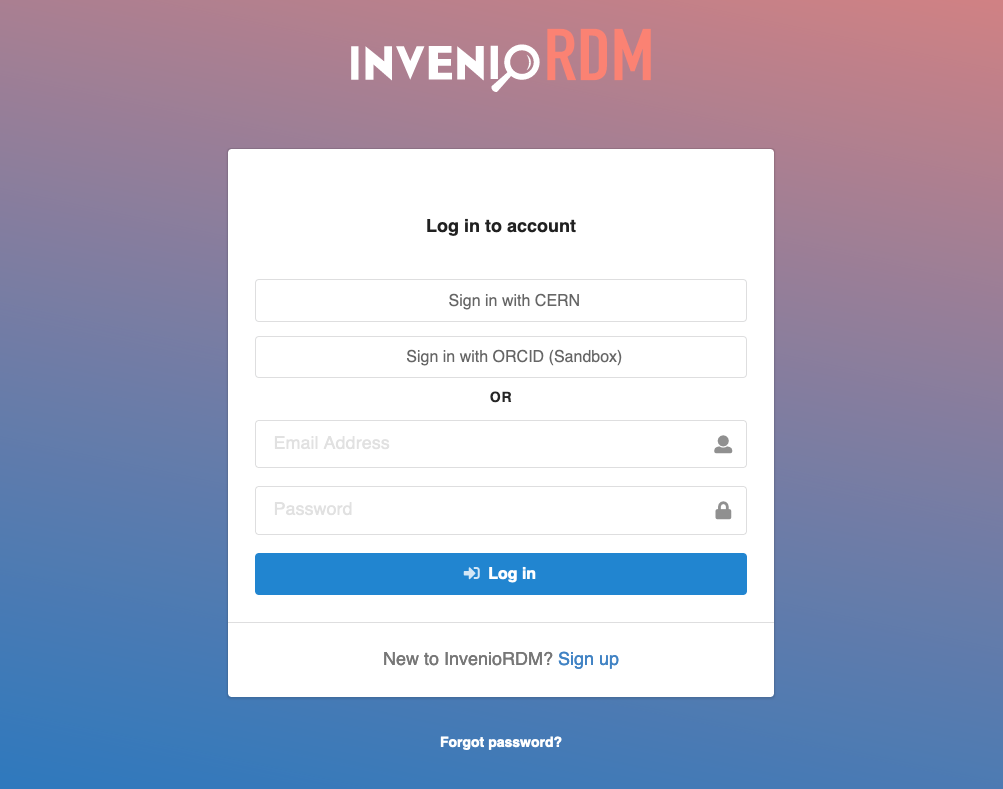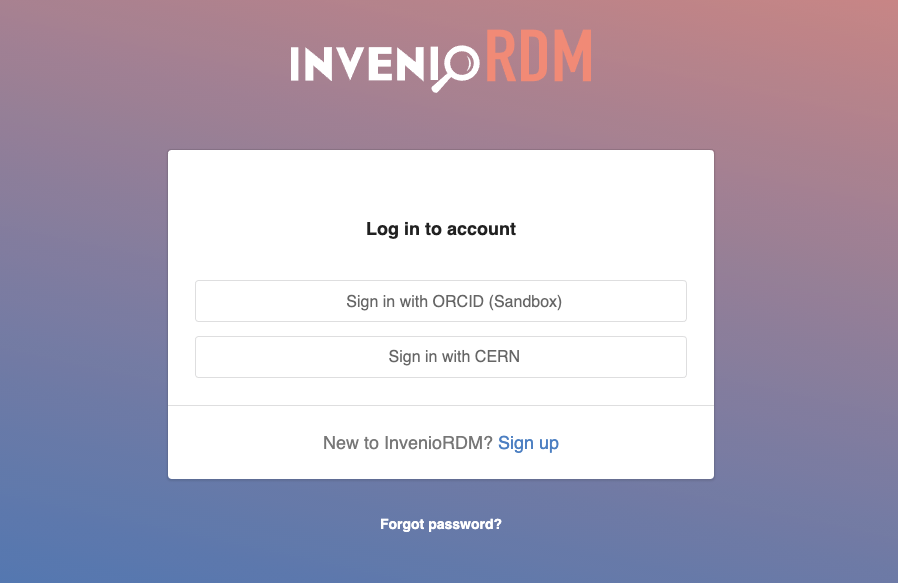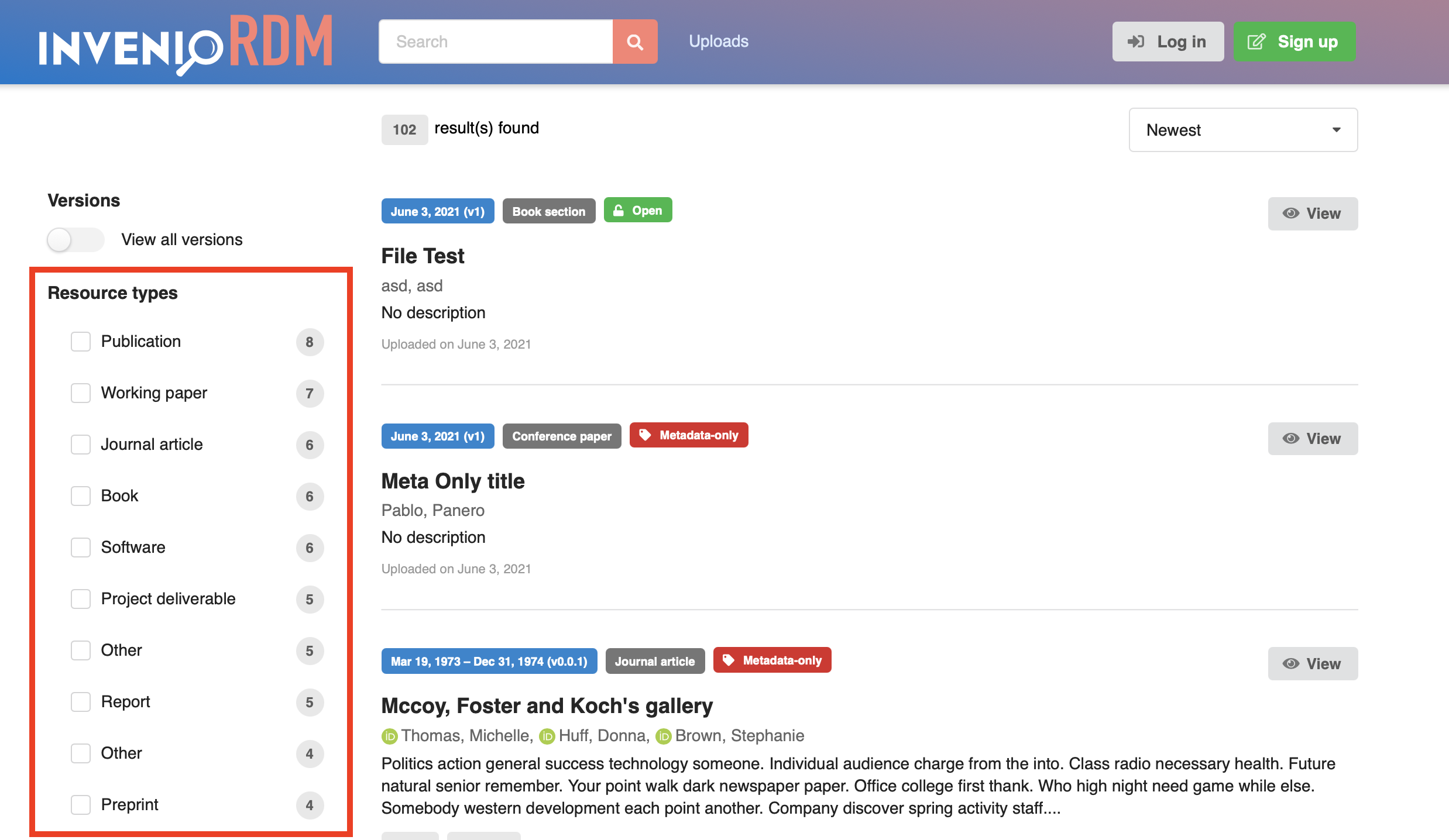InvenioRDM v4.0¶
We're happy to announce InvenioRDM v4.0!
Warning
InvenioRDM v4.0 is NOT yet suitable for production services.
Try it¶
Want to try the new features in v4.0? Just head over to our demo site: https://inveniordm.web.cern.ch
If you want to install it, follow the installation instructions on https://inveniordm.docs.cern.ch/install/
What's new?¶
Single sign-on (SSO)¶
InvenioRDM can now easily integrate with external authentication providers. You can enable ORCID integration and OpenID Connect/OAuth with Keycloak servers.

Read the Authentication documentation section to get to know how to set it up.
SAML integration is also supported, but it requires a more advanced setup.
InvenioRDM v4.0 comes with various new features around authentication.
Disable local login¶
You can now e.g. disable local authentication (login and registration) via a configuration variable.

Changes to the user profile (change full name or e-mail address) can be blocked, which is particularly useful when using only external authentication in your setup.

Terms & conditions¶
After the first login with an external authentication provider, InvenioRDM can now prompt a custom account registration form to require input of extra information. For example, the user can be asked to accept the website's terms and conditions.

When only one external authentication provider is configured, InvenioRDM can be configured to skip the login page and automatically redirect to the external login page.
The detailed documentation describes how a new OAuth plugin integration can be implemented.
Vocabularies¶
This month we continued work on vocabularies. Most notably we migrated the resource types from the old to the new vocabulary and made them easily customizable.
Read more about this here.
Facets labelling¶
We've made it a lot easier to define new facets as well as provide human-readable labels for them. End-users won't notice any changes this month, but the update was important for the coming vocabularies we have to migrate.
However, we had to temporarily disable nested faceting, which was available for the resource type facet. We are working on bringing this feature back in the next release.

Performance improvements¶
As part of a overall review of the vocabularies integration, we've made several performance optimizations to ensure that searching and landing page rendering is as fast as possible.
IIIF and file processing¶
During this month, we've done initial work in integrating the Mirador v3 IIIF image previewer (Google Maps style viewing of large images). Most of the changes will only be visible in the coming v5.0 release. However, backend users will now see that for images (JPEG, PNG and TIFF) we are automatically extracting the width and height of the image in an async process.
Minor features¶
- Landing page: We now also show the DataCite JSON serialization as an export option.
- Landing page: Minor styling fixes in the deposit form and landing page.
- Docs: Add documentation on how to install DejaVu font for rendering DOI badges.
- Deposit form: The given name is no longer required.
- Internals: Refactored the record service into smaller sub-services.
- Search page: Added a German translation of the page.
Backward incompatible changes¶
-
Resource types - the metadata when creating a record has now changed from having two keys
{"type": ..., "subtype": ...}to having a single key{"id": ... }. -
Image width/height extraction requires having
ImageMagickinstalled (the Docker images have been updated to support this). -
REMINDER: We are deprecating the usage of
SITE_HOSTNAMEin favour ofSITE_API_URLandSITE_UI_URL.
Credits¶
The development work in this release was done by:
- Brookhaven National Laboratory (Carlos)
- CERN (Alex, Ezgi, George, Ines, Javier, Lars, Nico, Pablo G., Pablo P., Zach)
- Data Futures (Dan Granville)
- Northwestern University (Guillaume)
- TU Graz (Mojib)
- TU Wien (Max)